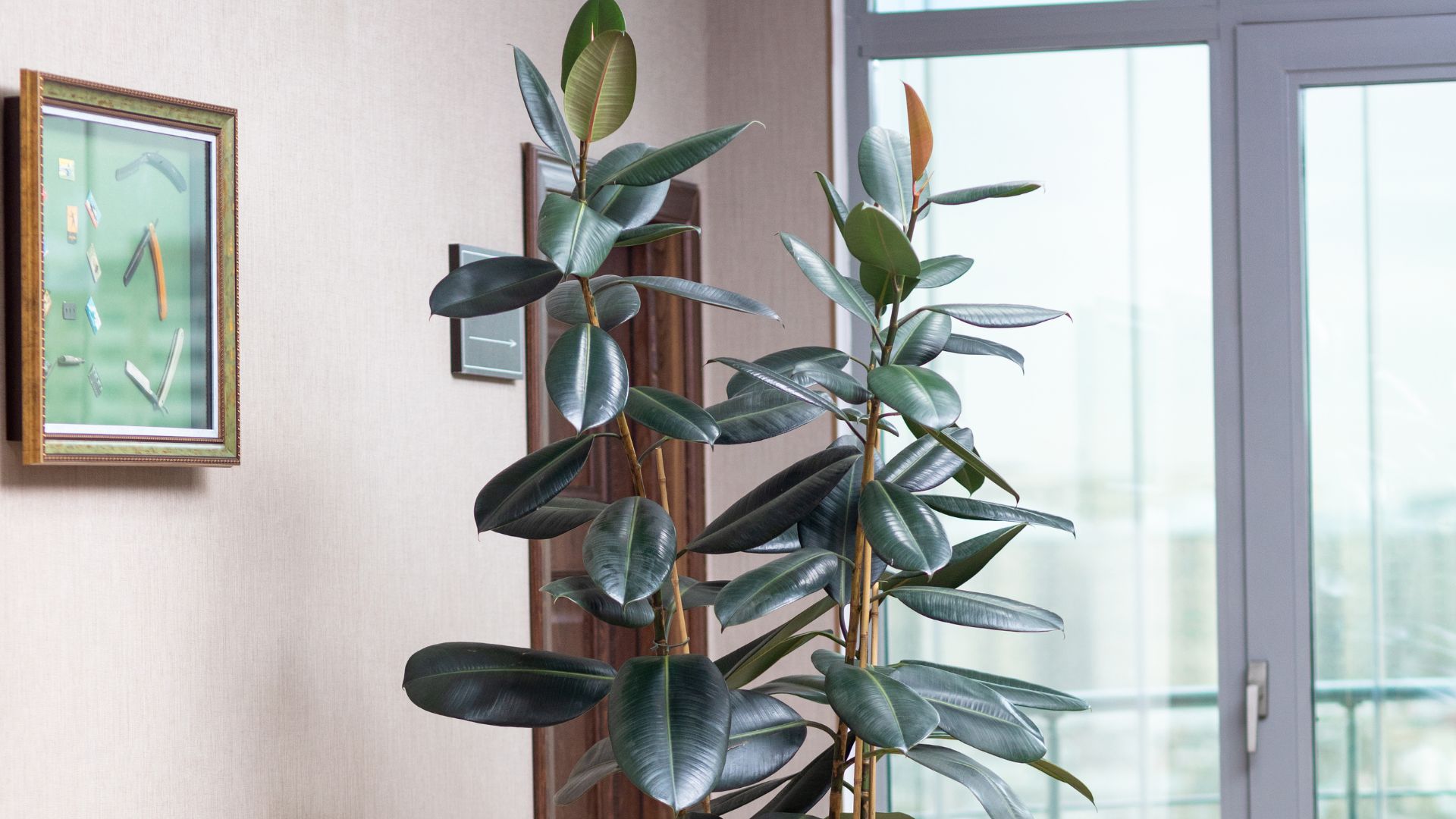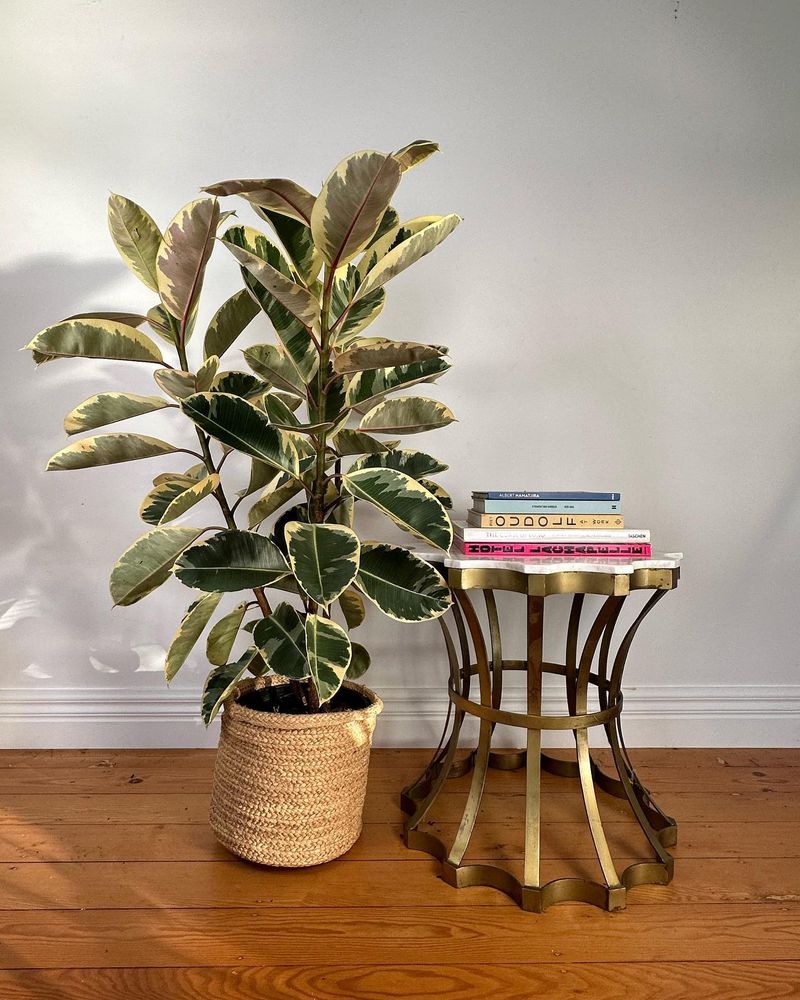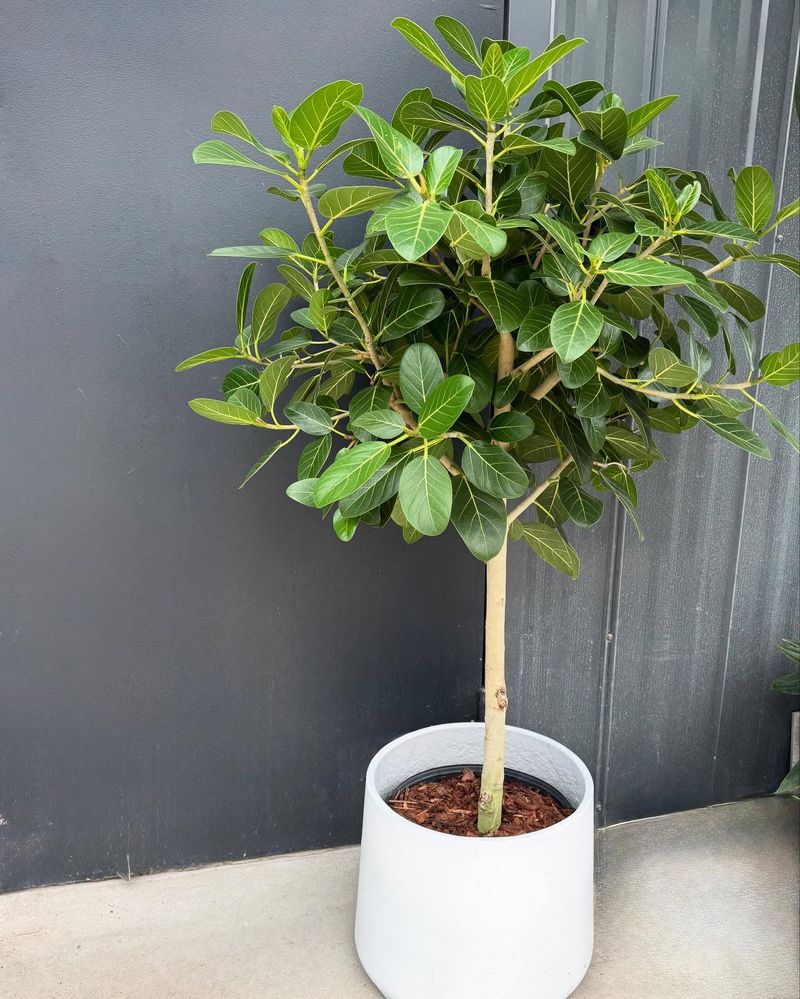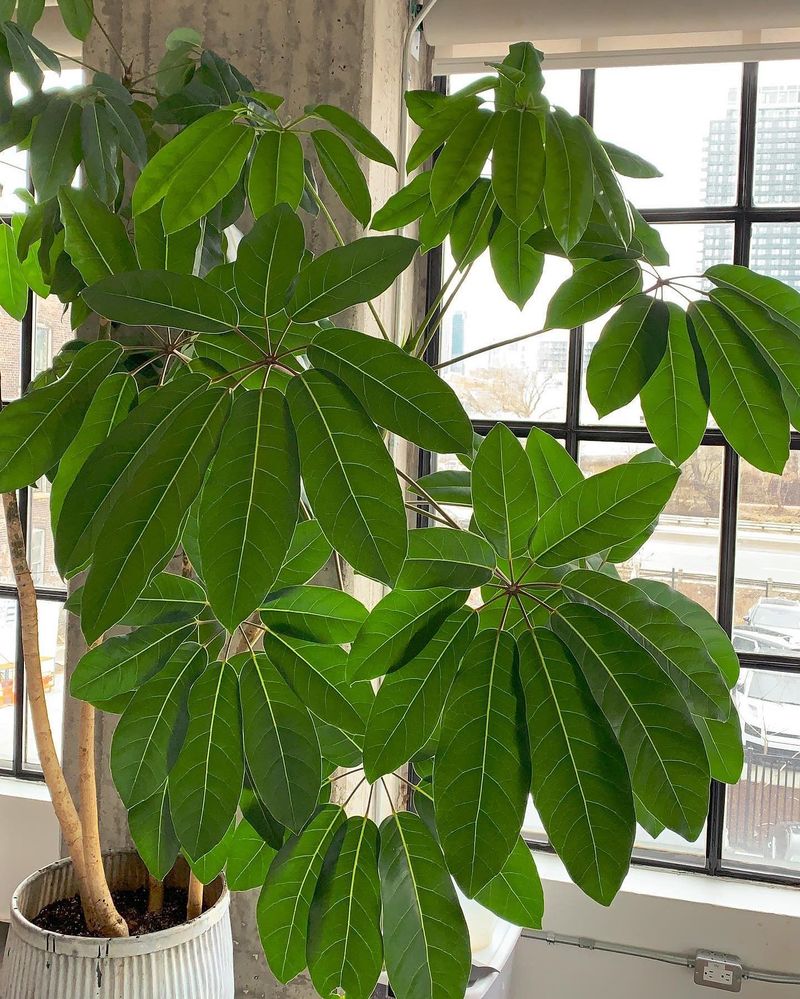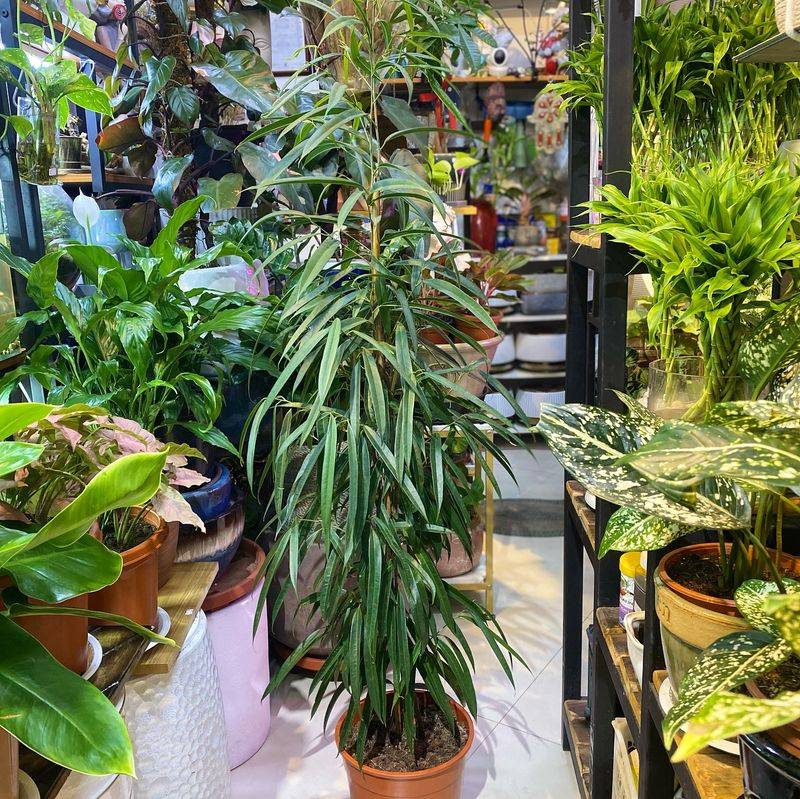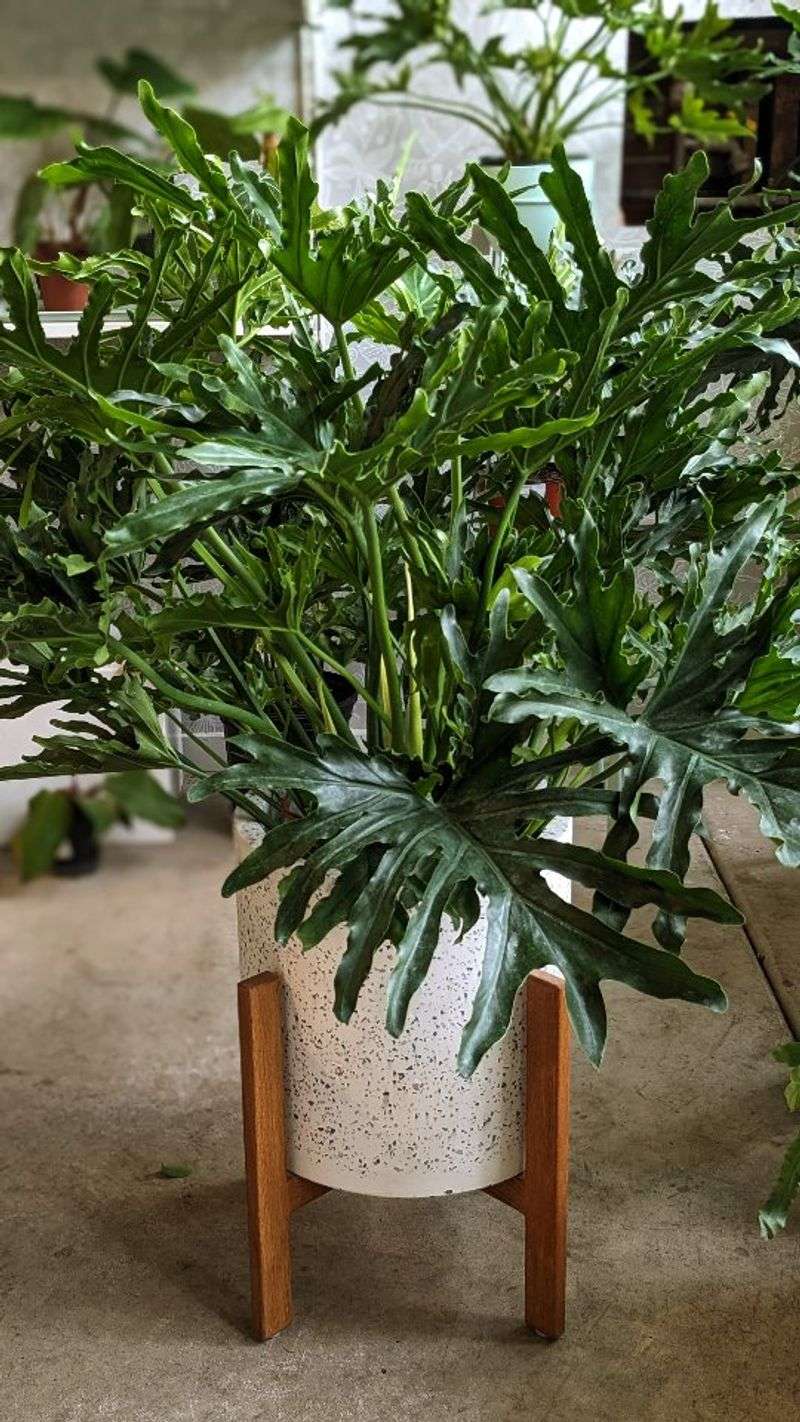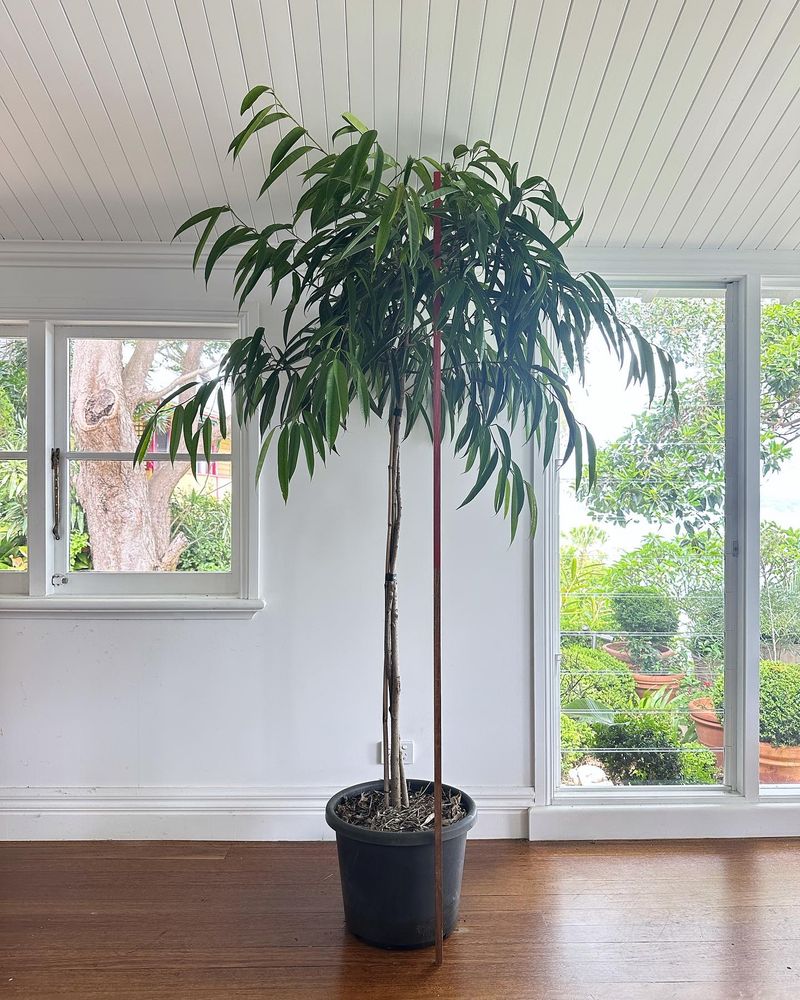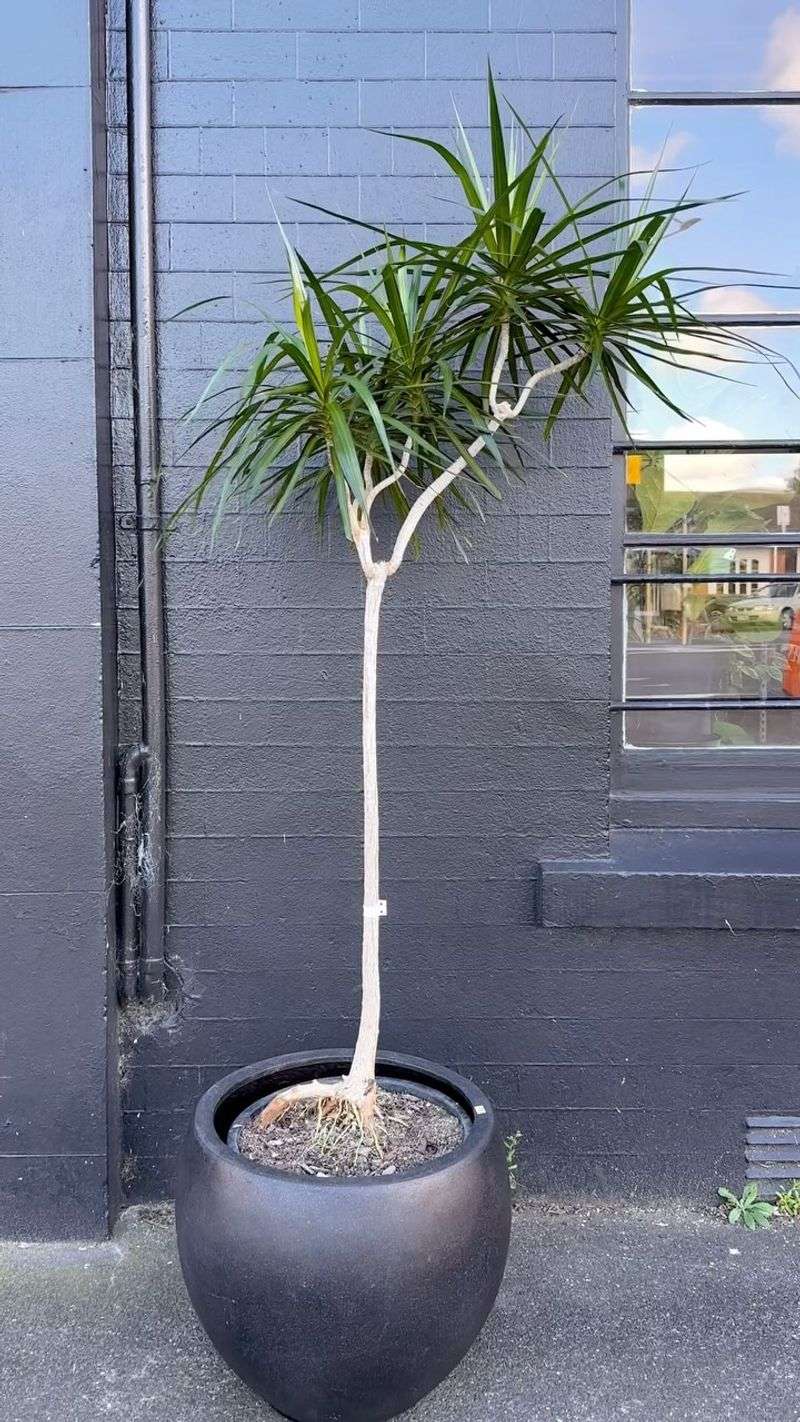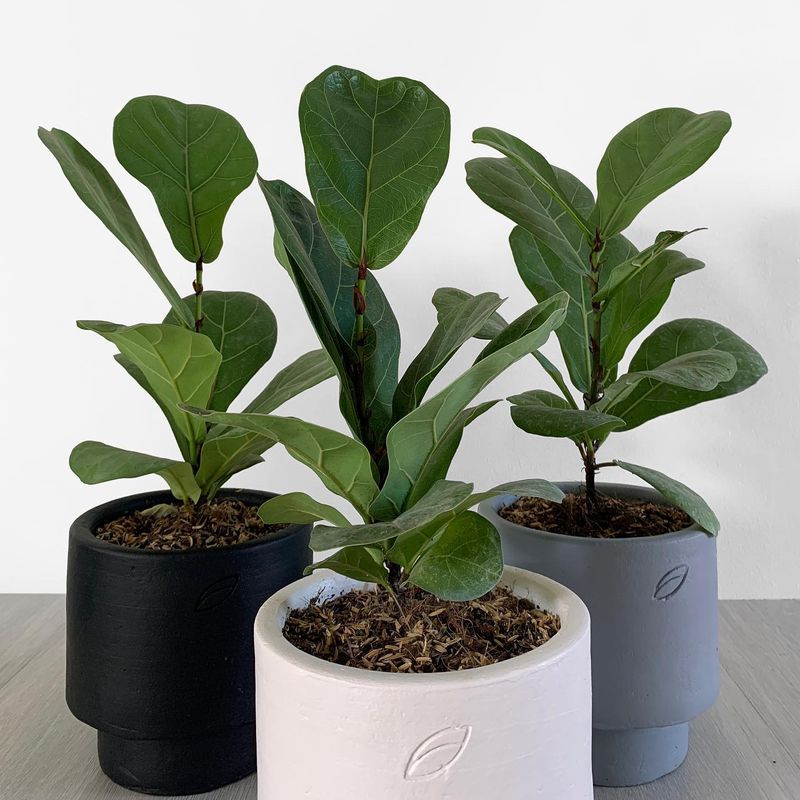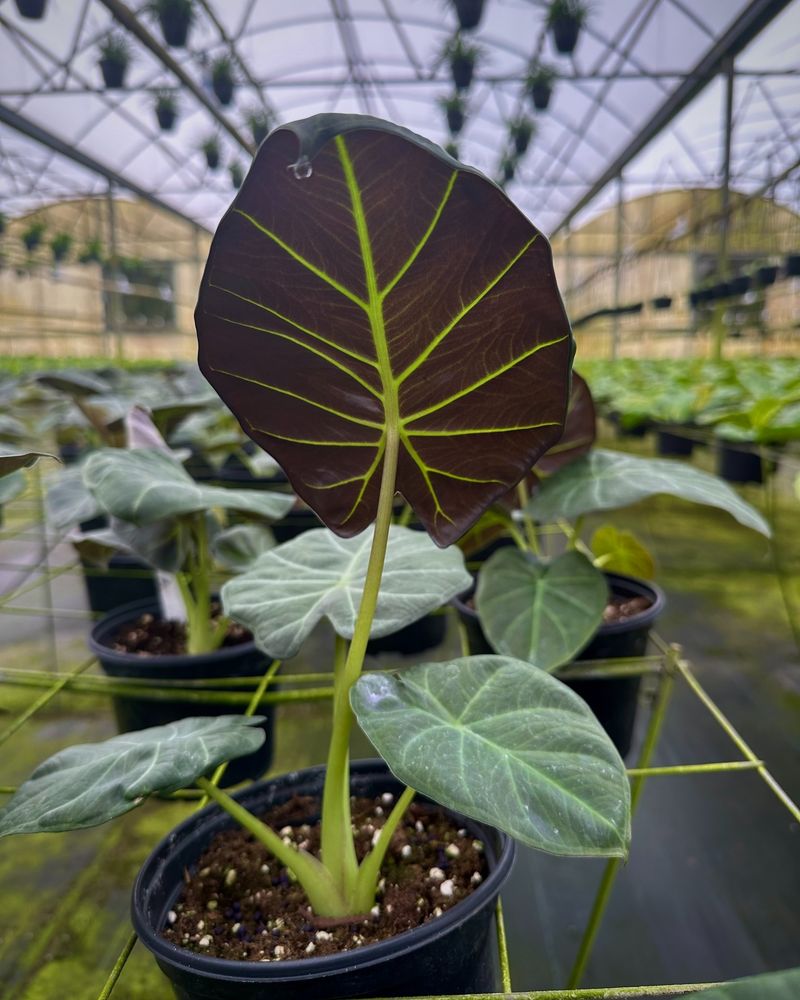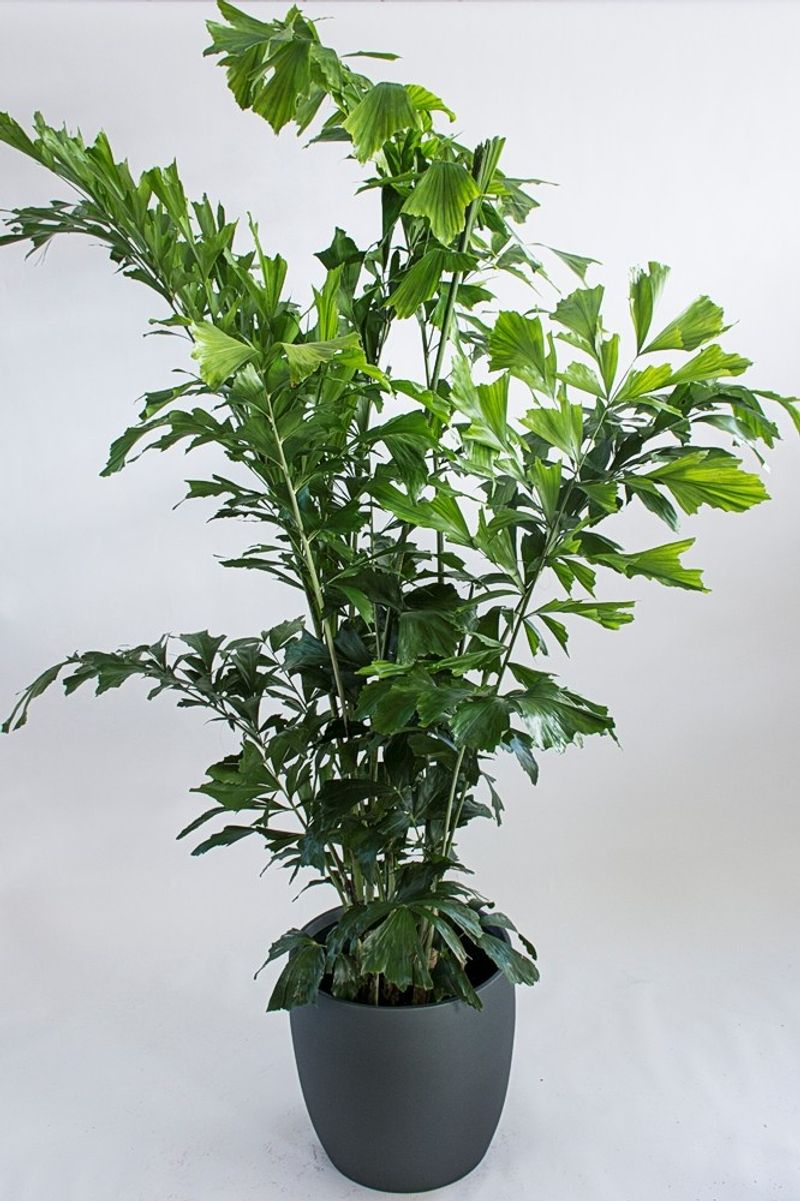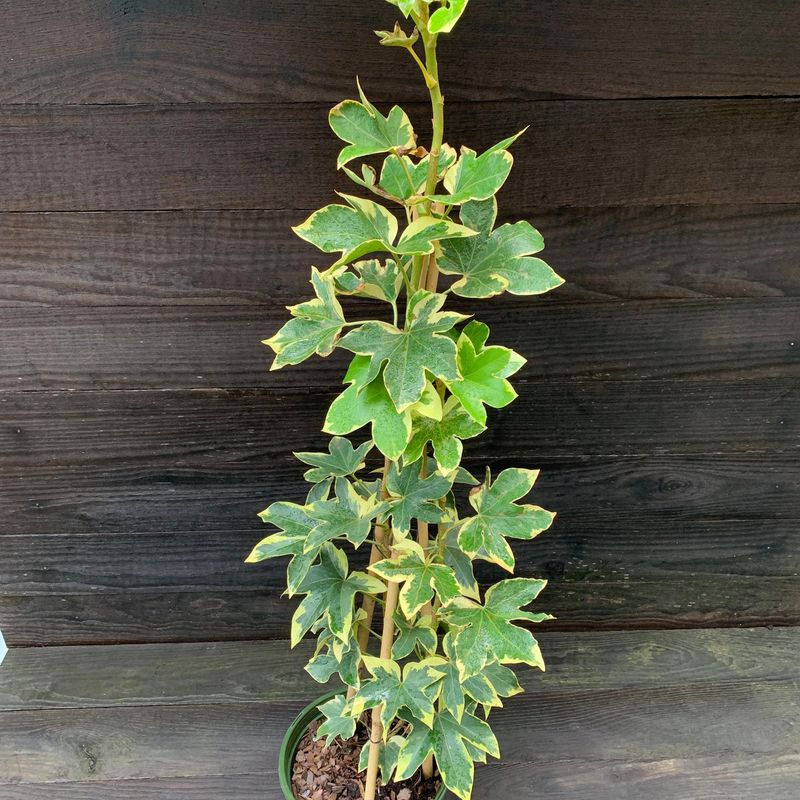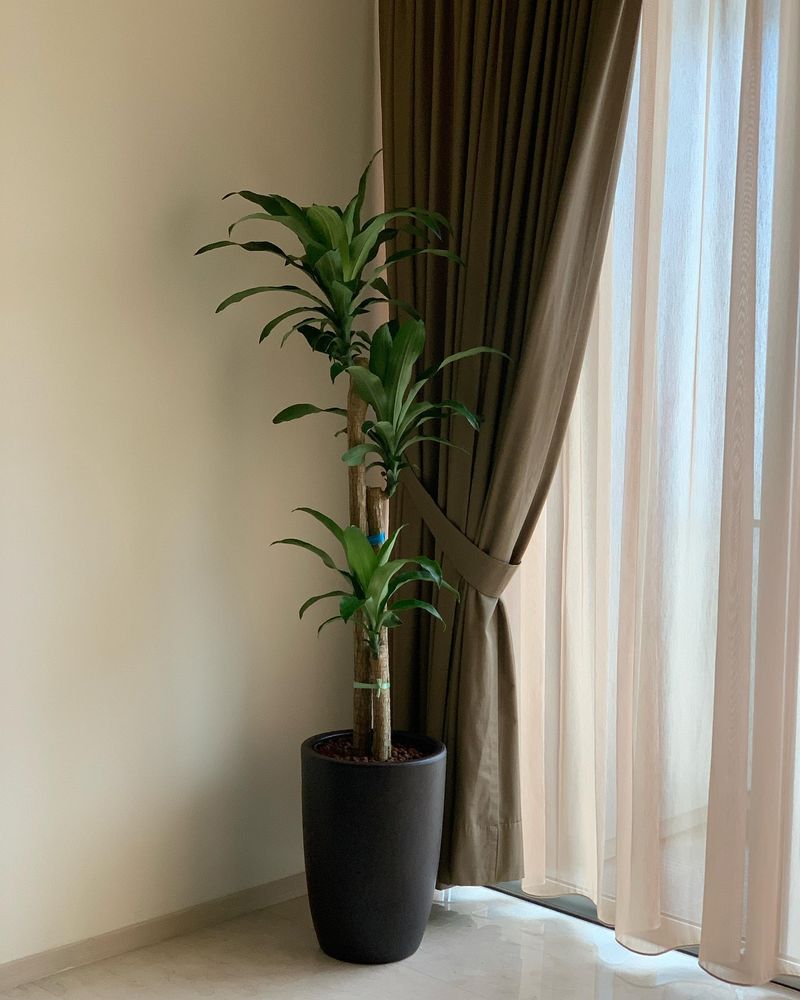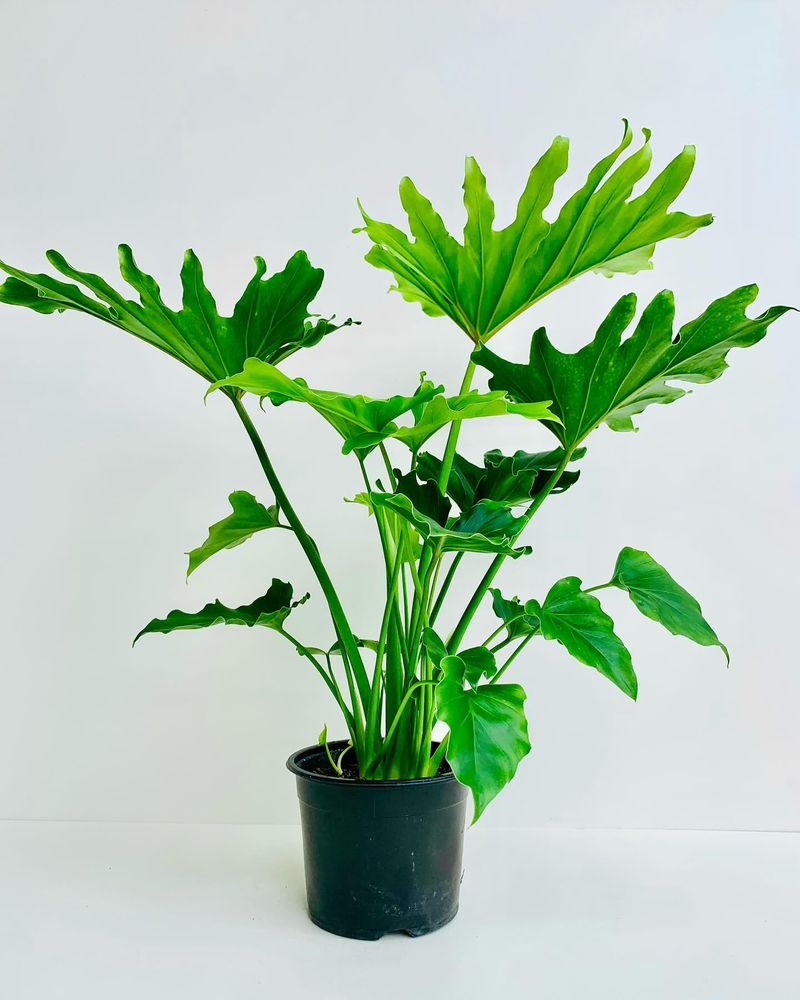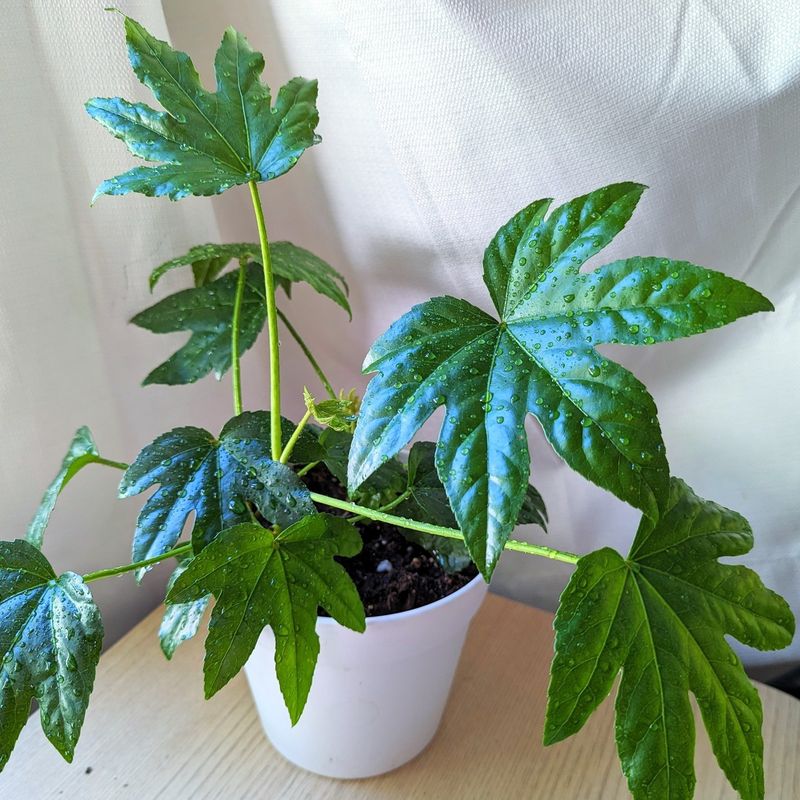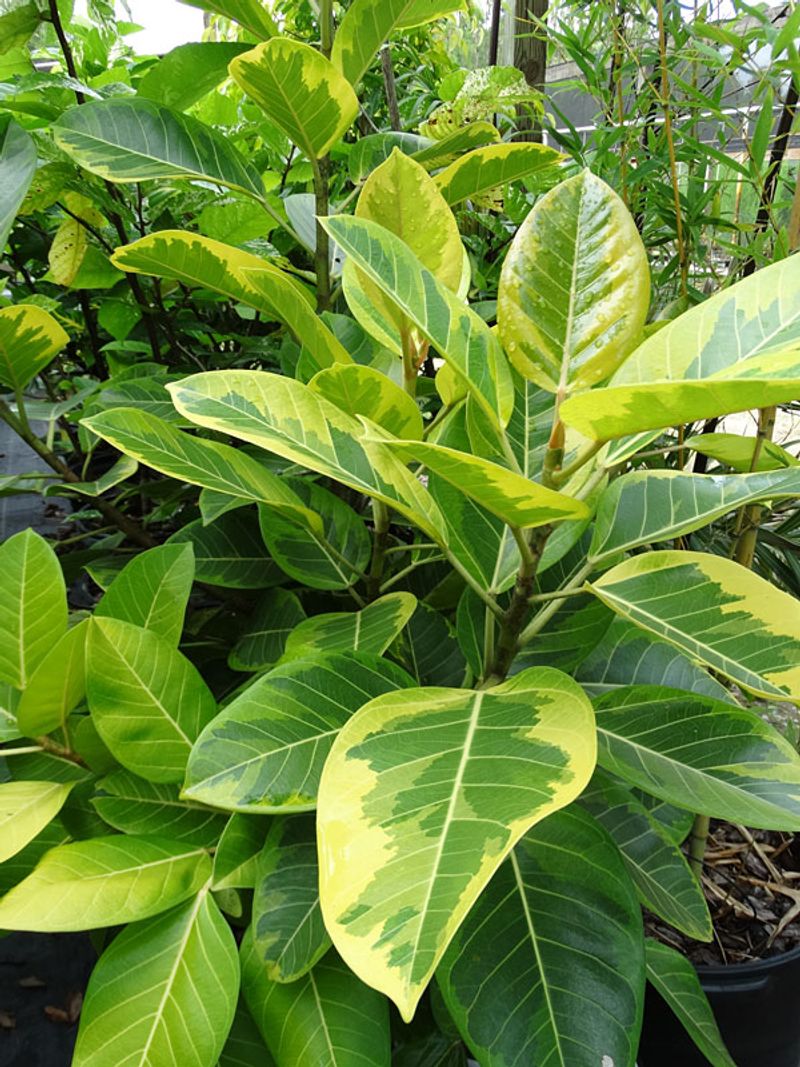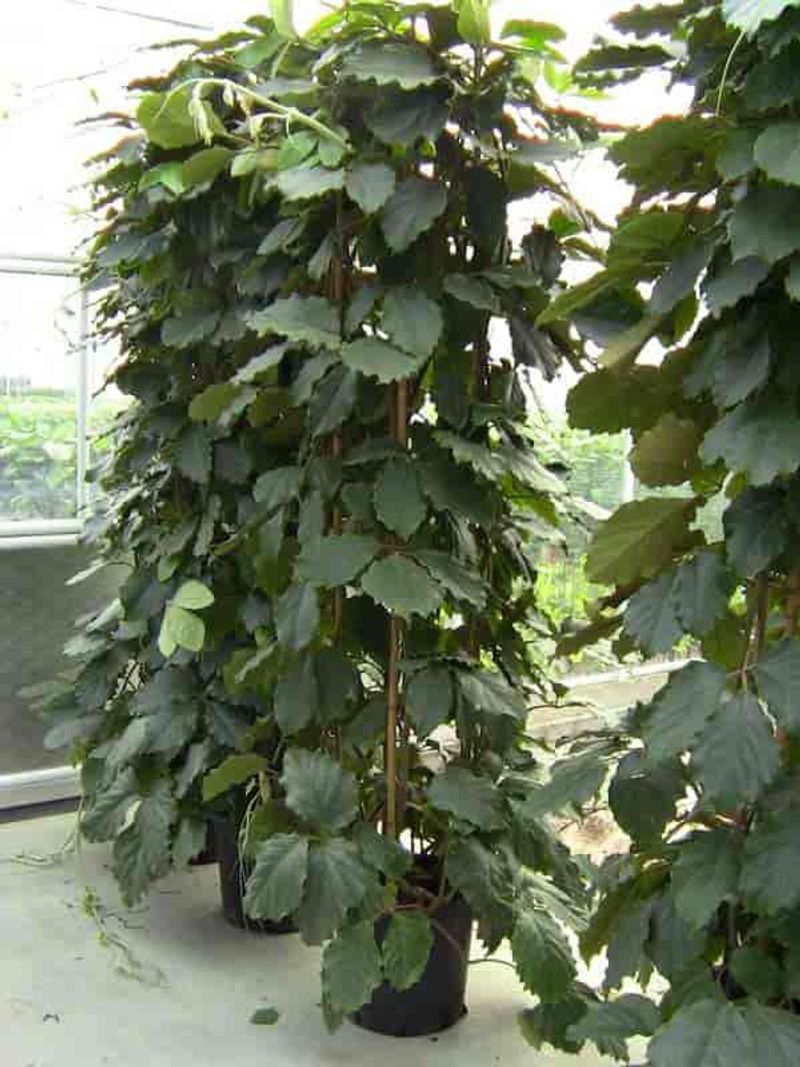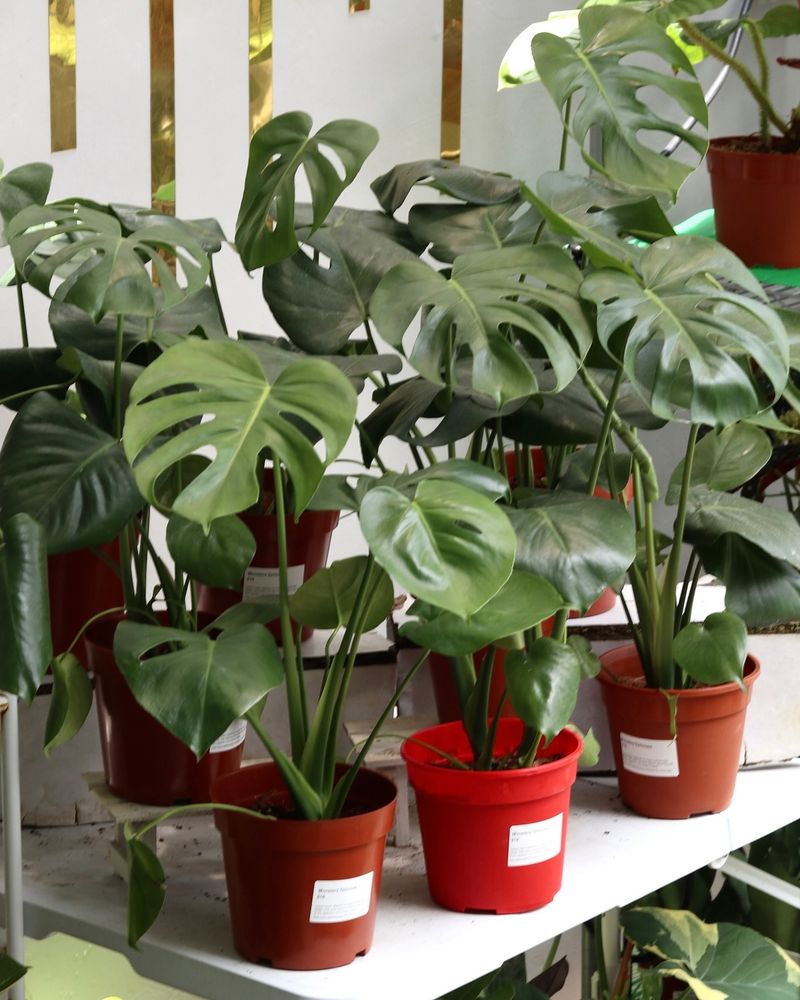I’ve killed three fiddle leaf figs in the span of two years—a plant parent failure I’m not particularly proud of. Despite following care guides and watching countless YouTube videos, these finicky plants just wouldn’t cooperate with my apparently deadly touch. After the third one turned crispy and dropped its leaves in what I can only describe as a dramatic plant tantrum, I decided enough was enough.
The appeal of the fiddle leaf is undeniable—those large, violin-shaped leaves create an instant statement in any room. But why torture ourselves with their diva-like tendencies when numerous alternatives offer the same aesthetic impact without the heartbreak? My search for fiddle leaf lookalikes led me down a rabbit hole of surprisingly cooperative tall houseplants that deliver similar visual impact.
What follows is my hard-earned collection of plants that give you that same designer look without requiring a botany degree. Each one brings the drama and height of a fiddle leaf fig but won’t collapse if you forget to water it for a week or place it slightly off-center from the perfect light source. These are the plants for those of us who want to enjoy greenery without the constant anxiety.
1. Rubber Plant
My first rubber plant survived three apartment moves and a period when I completely forgot its existence for two weeks. The glossy, leathery leaves have that same dramatic size as fiddle leaf figs but with a hardy constitution that forgives inconsistent watering.
Unlike its fussy cousin, rubber plants adapt to medium light conditions and don’t throw leaf-dropping tantrums with minor temperature changes. They grow steadily upward, eventually forming a tree-like structure that commands attention in any room.
Available in green, burgundy, and variegated varieties, these plants offer versatility while maintaining that bold, architectural presence we crave from statement plants.
2. Bird Of Paradise
Walking into my friend’s sunlit apartment, I mistook her bird of paradise for a fiddle leaf from across the room. Those massive, paddle-shaped leaves create the same dramatic silhouette but come attached to a plant that actually communicates its needs before collapsing.
Native to South Africa, this beauty tolerates dry air and occasional neglect far better than a fiddle leaf ever would. The leaves unfurl from the center in a fan-like pattern, creating architectural interest even without its famous crane-shaped flowers (which rarely appear indoors anyway).
Just give it bright, indirect light and water when the top inch of soil dries out.
3. Ficus Audrey
After my third fiddle leaf catastrophe, a plant shop owner gently guided me toward Ficus Audrey. “Same family, half the drama” was her selling point, and she wasn’t wrong. The velvety, oval leaves grow almost as large as fiddle leaves but with a softer, more forgiving texture.
Ficus Audrey handles lower light situations with grace and doesn’t immediately drop leaves when moved to a new spot. The silvery-green foliage develops a beautiful white venation pattern as it matures, adding subtle texture that fiddle leaves lack.
Mine has doubled in size over a year with basic care—proof that not all ficus varieties are out to break your heart.
4. Schefflera Amate
The umbrella tree earned its permanent spot in my living room after surviving a month-long vacation absence with only a self-watering bulb for company. Its glossy, fingerlike leaves spread in a pattern reminiscent of an umbrella, creating visual interest while maintaining that bold leaf presence.
Unlike the temperamental fiddle leaf, Schefflera Amate bounces back quickly from occasional neglect and adapts to a variety of light conditions. The stems grow strong and woody over time, supporting the plant as it reaches impressive heights without toppling over.
For those tracking success metrics, mine grows about a foot yearly with minimal intervention—exactly what plant beginners need.
5. Ficus Alii
My search for the most resilient ficus led me to Ficus Alii, often overlooked in the shadow of its more famous relatives. Long, slender leaves cascade from woody stems, creating a softer, more graceful silhouette than the fiddle leaf’s rigid structure.
What makes this plant exceptional is its resistance to common ficus ailments. When my apartment heating kicked on for winter, my fiddle leaf dropped leaves in protest while the Alii continued growing without complaint.
The narrow leaves gather less dust and allow more light to filter through, making it perfect for brightening corners without overwhelming the space.
6. Philodendron Hope Selloum
The dramatic, deeply lobed leaves of the Hope Selloum create instant tropical vibes without the tropical maintenance requirements. After watching my neighbor’s fiddle leaf slowly decline despite her best efforts, I recommended this philodendron as a replacement.
Six months later, her Hope Selloum had already produced five massive new leaves while adapting perfectly to her north-facing window. The glossy, rippled foliage spreads outward as it grows upward, filling empty corners with lush greenery.
Unlike fiddle leaves, this philodendron clearly communicates its needs—drooping slightly when thirsty and perking right back up after watering, no guesswork required.
7. Ficus Longifolia
During a recent plant shop visit, I almost walked past what I thought was a small olive tree until the owner mentioned it was actually Ficus Longifolia. The slender, pointed leaves create a feathery texture while maintaining height similar to a fiddle leaf fig.
Unlike its finicky cousins, this ficus handles average indoor humidity without browning leaf tips and adapts to moderate light conditions. The branches grow with a graceful, slightly weeping habit that softens its vertical presence.
For anyone seeking a more contemporary, less tropical aesthetic than traditional fiddle leaves provide, this lesser-known ficus delivers architectural interest without the maintenance headaches.
8. Dracaena Marginata (Dragon Tree)
My dragon tree has survived three years of questionable care while maintaining its structural drama and height. The slender, arching leaves spring from woody trunks that can be trained as single stems or allowed to branch for a fuller appearance.
While not a perfect fiddle leaf doppelgänger, it delivers similar vertical impact and architectural presence. What truly sets it apart is its remarkable drought tolerance—I’ve returned from two-week trips to find it completely unfazed by my absence.
The thin, strappy leaves with red margins add textural contrast to spaces dominated by broader-leafed plants, creating visual interest through complementary forms rather than competition.
9. Ficus Lyrata Bambino (Dwarf Fiddle Leaf)
For those who can’t completely let go of the fiddle leaf dream, the Bambino variety offers a compromise. After killing two standard fiddles, I cautiously brought home this compact cousin and was pleasantly surprised by its resilience.
The leaves maintain that iconic violin shape but grow closer together on sturdier stems, creating a more stable plant that’s less prone to leaning or dropping leaves. While it won’t reach the towering heights of a standard fiddle leaf, it tops out at a respectable 4-5 feet with proper care.
Most importantly, it forgives occasional watering lapses and adapts better to indoor conditions than its full-sized relative.
10. Alocasia Regal Shield
The first time I saw an Alocasia Regal Shield at a plant show, I stopped in my tracks. Those massive, shield-shaped leaves with dramatic veining create an even more striking presence than fiddle leaf figs, with none of the temperamental behavior.
While alocasias have a reputation for being challenging, this particular variety proves surprisingly adaptable to indoor conditions. The dark, almost black-green leaves grow on sturdy stems that rarely need staking, maintaining their upright posture without support.
Mine thrives in bright indirect light but tolerates moderate light without immediately sulking—a flexibility fiddle leaves never mastered in my care.
11. Caryota (Fishtail Palm)
After a disappointing string of fiddle leaf failures, discovering the fishtail palm felt like finding hidden treasure. The uniquely shaped fronds—resembling the tail of a fish, hence the name—create visual interest while reaching impressive heights indoors.
Unlike many palms that struggle with dry indoor air, Caryota adapts remarkably well to typical home conditions. The bi-pinnate leaves cascade elegantly from central stems, creating movement and texture that static fiddle leaf foliage lacks.
My specimen has maintained consistent growth through winter months when other tropicals typically stall, proving its adaptability to seasonal light changes.
12. Fatshedera Lizei (Tree Ivy)
Looking for something truly unique, I stumbled upon Tree Ivy—a fascinating plant that combines the best features of fatsia and English ivy. The glossy, star-shaped leaves grow on upright, slightly woody stems that can reach 6 feet tall with minimal support.
While not an exact fiddle leaf lookalike, it creates similar vertical impact with a fraction of the maintenance. The stems grow straight up before gracefully arching, creating architectural interest without the constant rotation needed to keep fiddle leaves from leaning.
As a bonus, it thrives in cooler temperatures where tropical fiddle leaves struggle, making it perfect for rooms that run on the chilly side.
13. Dracaena Fragrans (Corn Plant)
My grandmother’s corn plant has thrived in the same corner for over a decade—a testament to its incredible longevity compared to the short-lived fiddle leaf figs I’ve encountered. The long, arching leaves emerge from thick, trunk-like stems that develop attractive bark-like patterns with age.
What makes this plant particularly special is its ability to purify air while tolerating low light conditions that would kill a fiddle leaf within weeks. The leaves maintain their rich green color even in winter months when natural light diminishes.
For those seeking height without hassle, few plants deliver more reliable vertical presence with less maintenance than this classic houseplant.
14. Philodendron Selloum ‘Little Hope’
When my apartment’s limited ceiling height made a full-sized Hope Selloum impractical, I discovered its compact cousin ‘Little Hope.’ The deeply lobed, glossy leaves create the same dramatic tropical effect while staying proportional to smaller spaces.
Unlike fiddle leaf figs that grow straight up and become unstable, Little Hope develops a naturally balanced form that rarely requires staking or support. The leaves emerge a vibrant copper color before maturing to deep green, adding dynamic color transitions fiddle leaves never provide.
Most impressively, it maintains high humidity around itself, thriving in dry apartments where most tropical plants struggle.
15. Fatsia Japonica (Japanese Aralia)
After watching my neighbor struggle with her third failing fiddle leaf, I suggested Fatsia Japonica as an alternative. The glossy, hand-shaped leaves create bold visual impact while handling conditions that would send fiddle leaves into decline.
What makes this plant particularly valuable is its remarkable shade tolerance and preference for cooler temperatures. When placed in a north-facing window where my fiddle leaf had previously languished, the Fatsia produced three new leaves in a single month.
The tropical appearance belies its surprising hardiness—it’s actually cold-tolerant enough to grow outdoors in milder climates, making it perfect for drafty apartments.
16. Ficus Altissima (Council Tree)
During a desperate search for fiddle leaf alternatives, a specialty nursery owner introduced me to Ficus Altissima. The large, leathery leaves feature stunning yellow variegation that catches light beautifully, creating more visual interest than solid-colored fiddle leaves.
Unlike its finicky relatives, this ficus maintains its leaves even when environmental conditions fluctuate. The branches grow with natural balance, rarely developing the awkward leaning habit that makes fiddle leaves so challenging to position.
For anyone who appreciates the bold leaf size of fiddle figs but craves more color variation, this lesser-known ficus delivers dramatic presence with substantially less maintenance drama.
17. Tetrastigma Voinierianum (Chestnut Vine)
Most people overlook vines when seeking tall houseplants, but Tetrastigma trained on a moss pole creates vertical drama that rivals any fiddle leaf. The large, deeply lobed leaves develop a beautiful glossy finish that reflects light around the room.
Unlike fiddle leaves that grow painfully slowly indoors, this vigorous climber adds noticeable height each month when given proper support. The vining habit allows for creative training—I’ve wrapped mine around a tall bamboo stake to create a spiral effect that draws the eye upward.
Best of all, it clearly communicates its needs through visible leaf movements, eliminating the guesswork that makes fiddle leaf care so frustrating.
18. Monstera Deliciosa (Swiss Cheese Plant)
No list of fiddle leaf alternatives would be complete without mentioning the now-iconic Monstera. After killing my second fiddle leaf, I reluctantly tried this “trendy” plant and discovered why it’s earned its popularity—it actually grows without constant coddling.
The large, fenestrated leaves create even more visual interest than fiddle leaves as they mature and develop their characteristic holes and splits. Unlike the rigid, unforgiving nature of fiddle figs, Monsteras communicate their needs clearly—leaves curling when thirsty, yellowing when overwatered.
Mine has produced a new leaf monthly for the past year with basic care, proving that dramatic foliage doesn’t have to come with dramatic maintenance requirements.

